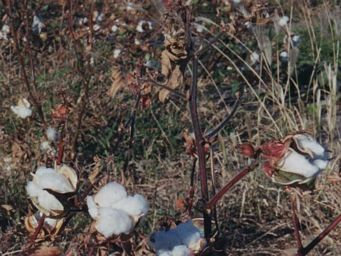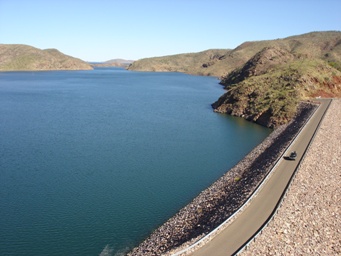Australia So Much to See
The Story of Cotton continued


Can cotton be grown in northern latitudes where there is abundant water available?
Cotton was trialled commercially in
the Ord River Irrigation Area in the Kimberley region of Western Australia between 1964 and 1974. This was enabled by subsidies from
the Western Australian Government.
The industry failed due to an inability to control major insect pests, and problems with quality.
The industry never achieved economic yields and short fibre length and discolouration resulted in substantial discounts. The
crop was grown over the wet season in line with an eastern Australian cropping calendar. The industry was totally reliant on
chemical insecticides for pest control. The crop was harvested over an extended period with weather damage common.
Cotton
is still an available cropping option for the Ord River Irrigation Area. A cotton production system based on genetically modified
varieties has been developed for the ORIA, based on intensive local research which started in 1996.
Production guidelines include:
The
crop needs to be grown during the dry season to avoid pink bollworm and cluster caterpillar. Early planting is essential
to ensure good early season growth and harvest before lint quality is affected by wet season rain. The planting window is five
weeks between 1 March and 1 May, with maturity taking about 180 days for most varieties.
Difficulties to be overcome:
The
small Kununurra gin has limited capacity and ginning costs are high. Major investment in ginning and harvesting infrastructure is
required to service a viable cotton industry. Cotton is seen as a base field crop that will need a minimum area to achieve viability.
This is believed to be at least 5,000 hectares. Partnerships with ginners and marketers are essential for a future cotton industry. Input and freight costs are relatively high. Maximum achievable yields are about 80% of those possible in eastern Australia
due to lower radiation received in the dry season.




August - September, soil preparation takes place.
October, planting takes place when soil temperatures exceed 15°c. Irrigation
is applied either before or after planting, depending on the season. Residual herbicides are applied at planting.
November, weed
and insect control. Crops start to set squares (buds).
December, weed and insect control. The cotton squares begin to turn to
flowers. Irrigation may commence, and crops be fertilised.
January, peak flowering and the cotton bolls start to develop. Irrigation
timing, foliar fertilisers and growth regulator applications are vital.
February, the final irrigation is crucial to allow the
crop to fully mature.
March, when about 60% of the cotton bolls are open (white, fluffy cotton), defoliants are applied to get
rid of the leaves and reduce any contamination at harvest. Picking starts in some areas.
April, picking is usually in full swing
and so are the cotton gins. Picking needs to be done before there is any rain, or the quality of the cotton lint is reduced.
May to August, following picking, the cotton stalks are slashed. Minimal cultivation is preferred to prevent survival
of heliothis caterpillar pupae. A winter crop may be grown during this spell.